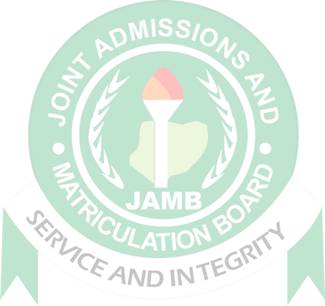
Biology
Paper 1 | Objectives | 50 Questions
JAMB Exam
Year: 2008
Level: SHS
Time:
Type: Question Paper
Answers provided
FREE
No description provided
Feedbacks
This paper is yet to be rated

Paper 1 | Objectives | 50 Questions
JAMB Exam
Year: 2008
Level: SHS
Time:
Type: Question Paper
Answers provided
No description provided
This paper is yet to be rated
8 Tips To Be More Productive in Test Revision for good grades and higher performance in exams
Revision tips on test preparation for Grade A students to. Grade A students tips for any test.
There's no secret to passing WAEC or BECE apart from the merit of hard work and adequate preparation
| # | Question | Ans |
|---|---|---|
| 1. |
In terms of the number of individuals, which of the following taxa is most inclusive? A. order B. family C. class D. species |
C |
| 2. |
A characteristic that can possibly be shared by both living and non living organisms is A. locomotion B. irritability C. increase in biomass D. increase in size
Show Content
Detailed SolutionBoth living and non-living things have the ability to increase in size. |
|
| 3. |
The cell of an onion bulb can be differentiated from a cheek cell by the presence of A. plasmalemma B. chloroplast C. cell wall D. nucleus |
C |
| 4. |
In plants, the structure that performs a similar function with the testis in mammals is the A. stigma B. filament C. anther D. receptance |
C |
| 5. |
The bacteria type that are arranged in chains are the A. staphylococci B. clostidia C. streptococci D. basilli |
C |
| 6. |
The most abundant group of organisms in the animal kingdom is A. mammalia B. aves C. annelida D. insecta |
D |
| 7. |
Radial symmetry is a future common to A. platyhelminthes B. nematodes C. coelenterates D. arthropods |
C |
| 8. |
Which of the following is used mainly for balancing in fish? A. the caudal fin B. the pectoral fin C. the anal fin D. the dorsal fin
Show Content
Detailed SolutionDorsal fins help fish balance. |
|
| 9. |
The beak of a duck is structurally adapted for A. scooping and sieving food B. catching and grasping food C. picking and cracking food D. boring and sucking food |
A |
| 10. |
The most important characteristic that makes reptiles to conquer terrestrial habitats is the possession of A. long tail B. scaly skin C. sharp claw D. amniotic egg |
D |
Preview displays only 10 out of the 50 Questions